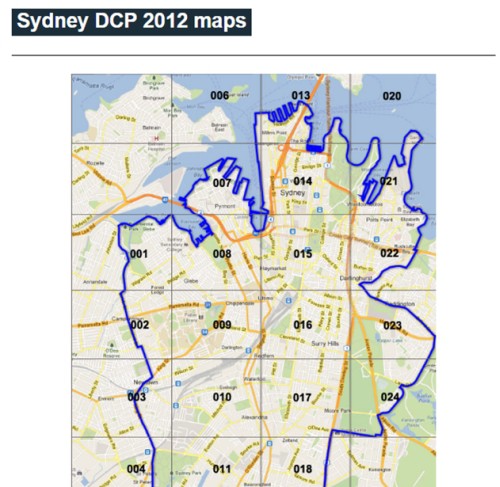Although residents interested in the heritage status of buildings usually think about heritage listing, in fact the role of conservation areas is usually more relevant, as virtually all of Glebe and Forest Lodge is covered by conservation areas. So what can we find online about conservation areas and what they mean for heritage conservation?
The document that tells you all you want to know is the Heritage Development Control Plan (DCP) 2006. You can find it on the City of Sydney (CoS) website under Development – Planning Controls – Development Planning Controls. But really, it’s probably simpler to use the CoS search function to find Heritage DCP. It is a pdf document.
To learn more about conservation areas we need to look at Section 4, ‘Heritage conservation areas and heritage streetscapes’. However, you might very well get distracted by other sections that provide useful information for anyone contemplating renovation of a heritage building.
To get the basics clear, Section 4 explains:
- Heritage conservation areas and heritage streetscapes provide an important opportunity to conserve and interpret the heritage significance of an area or significant townscape, group of buildings and sites. It is important that the heritage significance of the whole area is considered when proposing development.
- The Building Contributions Maps are provided for each area and streetscape and classify existing buildings as contributory, neutral or detracting.
That last sentence is very important – all buildings in a conservation area are classified as ‘contributory, neutral or detracting’ and different rules apply to each, which you can read about further on in Section 4. The importance of these classifications is indicated by the first two statements about ‘contributory’ items:
- Contributory buildings are to be retained.
- Alterations and additions should not significantly alter the appearance of principal and significant façades of a contributory building, except to remove detracting elements.
So, while most people understand that a ‘heritage listed’ item is protected, it is less widely understood that the very much larger number of contributory items in a conservation area are also strongly protected. In fact, if you read on, you will find that neutral and even detracting buildings can only be altered in order to improve their contribution to the surrounding area.
And how do we find out the classification of buildings? We go to the ‘Sydney DCP 2012 maps’ (http://www.cityofsydney.nsw.gov.au/development/planning-controls/development-control-plans/sydney-dcp-2012-maps). Yes, buried fairly deeply, so use the search function.
Here you will find the 24 amazingly detailed maps that cover the whole LGA. Maps 1, 2, 8 and 9 are the relevant ones for Glebe and Forest Lodge. If you click on map 001, ‘Annandale, Forest Lodge, Glebe’, you’ll find several types of map but we are looking for ‘Building contributions map’. Click here and you have arrived at the nub of the matter. Every building in the area is colour coded to indicate its classification. At a glance it is clear that most buildings are classified as ‘contributory’. Whoopee!











There are no comments yet. Please leave yours.